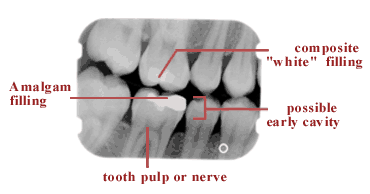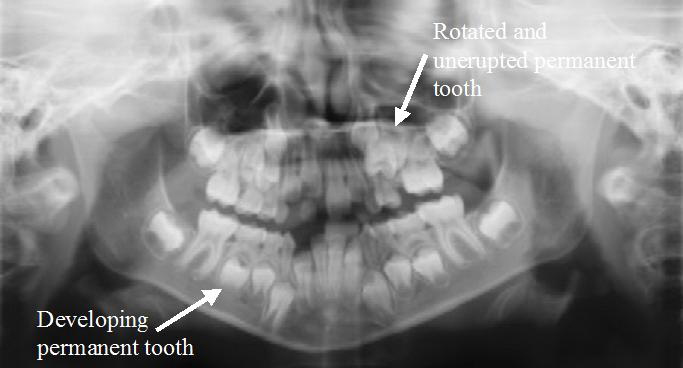Dental X-Rays
Consistent with an overall conservative approach to oral health care dentists should not be overly reliant on the use of dental X-Rays.
Adopting the medical community’s concept of “High Yield Criteria”, dental radiographs should be taken only when there is a clinical reason to believe that the x-ray will yield useful information that will impact on treatment recommendations. The use of such guidelines is the single best way to minimize a child’s lifetime exposure to medical radiation.
For that reason, there should not be a routine or regular regimen for taking radiographs.
Together with utilizing barrier protection, regularly calibrated machines and optimal developing chemistries, pediatric dentists continually seek to minimize all exposures.
There are, however, occasions when dental x-rays are necessary and appropriate. The dentist or staff member should always ask your permission and explain the reasons why the x-rays are necessary.
The most common x-rays that are obtained are cavity detecting bitewings and growth assessment panoramic views.
Many dentists have adopted digital technology for their x-rays. The digital x-rays deliver a much lower dose of radiation. They are, however, very sensitive and can detect cavities that would not be seen on conventional x-rays. This may lead to over diagnosis and over treatment. This same dilemma is currently being addressed within the medical community, as digital x-rays are leading to more aggressive treatment recommendations and diagnoses.
There is no clear cut answer on the interpretation of digital cavity detecting x-rays and how they should translate into treatment.
For dentists that practice with a very preventive oriented philosophy, the detection of very small or “incipient” cavities on an x-ray may lead to a recommendation to institute a fluoride rinsing regimen in the hope that the decay may be “arrested”.
| Cavity Detecting Radiographs |

Although the “bite-wing” x-ray has long been a standard component of the dental examination, it is only a piece of information that has to be interpreted within the context of a larger picture.
Over the years, we have learned that not every cavity that is detected on a bite wing x-ray is actively growing.
The most conservative approaches to restorative dentistry understand that small, or “incipient” cavities seen on x-rays may not be progressing.
Such small cavities may be reversed by the use of Fluoride rinses, particularly in the case of permanent teeth.
In such cases there is a chance that a small cavity can be “arrested”. Taking another set of cavity detecting x-rays in a year or more can determine whether the cavity stays stable in size, disappears or grows. If there is no evidence of growth at that time, you can continue to monitor, rather than fix the cavity.
Panoramic Radiographs

The panoramic x-ray is an especially useful diagnostic aid in Pediatric Dentistry.
Although this x-ray is over-utilized, there are very good reasons to obtain a panoramic film at a specific stage of head and neck development.
At that time that all 4 permanent incisors have erupted in the top jaw, the panoramic film provides lots of useful information regarding position and eruption paths of the teeth, as well as the presence or congenital absence of permanent teeth, a very common finding.
The panoramic x-ray is most useful in identifying those patients that are at risk for developing impacted canine (eye teeth).
In those patients, early diagnosis and subsequent extraction of baby eye teeth has a very good chance of preventing impaction and subsequent surgery.
Hits: 2
